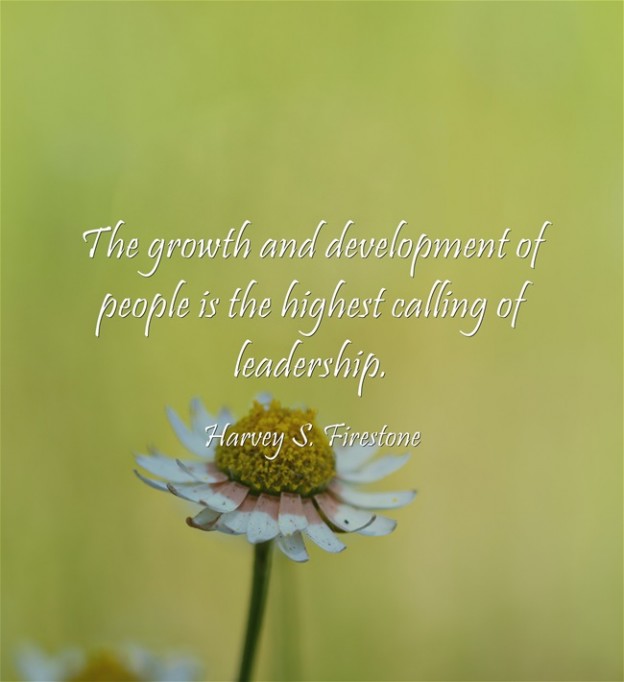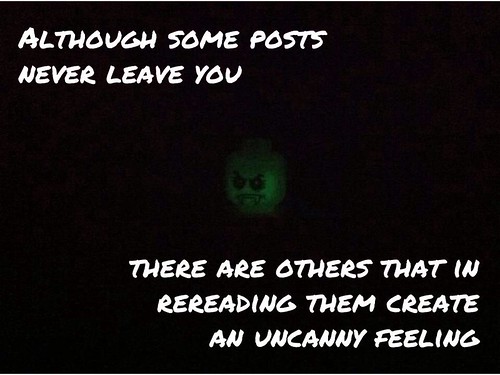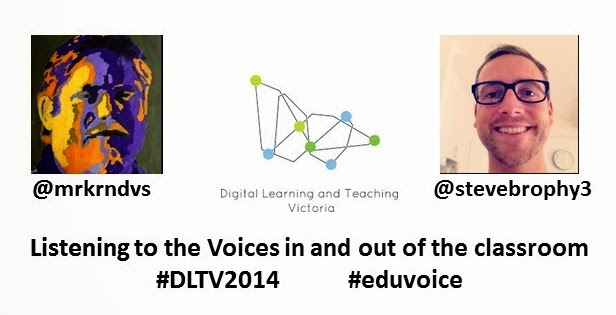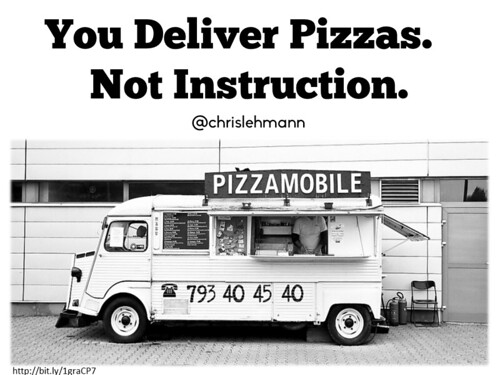
- creative commons licensed (BY-SA) flickr photo by mrkrndvs: http://flickr.com/photos/aaron_davis/16006575977
There is something about the Christmas / New Year break and reminiscing. It seems to be a time of year when everyone stops and takes stock. This year has had its moments. It is my first Christmas since my mother passed away. Although sad, I have found solace in reminiscing the memories I am left with.
Memories are a funny thing, not only can they play tricks on you. Deceive you. Manipulate the past to be as you think it is. There are also many different ways that they can be activated. More often than not, it is things that have become attached with the past. Beyond events like birthdays and Christmas, the obvious to me are people. This is particularly true when I get together with my siblings. Our shared history forces memories out of us. Another is places. In the last few months of my mother’s life, we would meet at a park near the city with my daughter. I can’t help but remember each time I drive past. A colleague told me that he still has the same feeling ten years on when he goes past his local oval where his father watched him play football, week in, week out. A different sort of memory is associated with objects. This maybe a range of different things, from a gift to a letter. One particular item which holds a lot of meaning for me in all facets of life is music. There are certain moments in life which I feel are best encapsulated by music. Here are the songs that remind me of my mum …
We Built This City On Rock and Roll (Starship)
This was the first song that I remember my mum ever playing for me. Who knows how old I must have been. Three maybe? Growing up, she did not have many records and by the mid-80’s they were replaced by compact discs, but I know she had this one and it is what I will always remember. I am sure it wasn’t the first song she played me, but over time it became a point of personal folklore.
Gimme Shelter (Holy Soldier)
Something odd happened when I hit my teens. I am not sure if it was just chance or not, but my mum stopped buying me country music and instead started purchasing metal albums. She would get music from the local Christian bookstore based on what was in the reduced bin near the door. One of my favourite purchases was Holy Soldier’s Last Train. I had never really listened to much heavy metal growing up and loved the melodrama. Ironically though, the track that I went back to again and again was a cover of the Rolling Stones’ ‘Gimme Shelter’. I had no idea that it was a cover and I don’t think mum had any idea that I was listening to the Rolling Stones.
I Do It For You (Bryan Adams)
At the same time as mum was purchasing me Christian metal, she was staving off the attack from popular culture. Saved by the ever nostalgic Gold 104.3 in the car, a station that played the best of the 60’s, 70’s and 80’s, she took to school to complain about the music that was being forced on me. In Year 7 every class sang a song as a group. The song Mr. Fitz had us singing was Bryan Adams ‘I Do It For You’ from Robin Hood – Prince of Thieves. Mum was furious about this choice and stormed up to the school. Sadly, not because she actually had taste and didn’t feel that it was respectable for anyone to be singing Bryan Adams, but because it was a song about love and in her eyes we were far too young for such things. (The irony of the situation was that Mr. Fitz was actually a writer for the band TISM, while Damien Cowell, aka Humprey B Flaubert, also taught music at the school at the time. I would hate to have know what they thought of the complaint.) To appease her, the song was actually changed to REM’s ‘Everybody Hurts’. Pain and suffering was acceptable.
Only You – Live at Roseland NYC (Portishead)
I am not sure if mum stopped buying or I stopped accepting, but as I grew older, started playing guitar, my tastes matured. I am not sure that there were too many fans in the house of my love of alternative rock, especially the more distorted music. Therefore, when I started driving I would have a bit of a selection in the car. Due to my grandparents purchasing a new car, I bought my car long before I could actually drive it. My rule was, you drive my car, you listen to my music. My CD of choice for mum was Portishead’s live album. Although not pop, I thought that mum would at least appreciate the vibe of it. Being who she was, mum didn’t say a word for near on six months until one day she cracked. She could not stand DJ Andy Smith’s incessant scratching throughout. It was just too much, she couldn’t stand it. I stopped playing her Portishead.
The Climb (Miley Cyrus)
I spent the last hours before my mum passed with my sister. To try and liven up her room we mused about what music we could play. My sister told me that they had watched Hannah Montana together and that mum really like the Miley Cyrus song from it. So I jumped on my phone and downloaded it. We left it on repeat next to her bed. I must admit that it was a weird moment when, after clicking to play something else, it randomly started playing in class on iPad a few months later.
A Personal Postscript
I remember when I started blogging, I thought of it as being something professional to capture my thinking and practise. Fine, the act of reflection might be subjective, but I never envisaged it as being personal. However, the more I read of others and wrote myself, the more I realised that there is something missed in being ‘too professional’ and not personal. I was particularly taken by the open sharing from people like Alan Levine, Dean Shareski, Doug Belshaw, Pernille Ripp, John Spencer, Amy Burvall, Jon Harper, Anne Mirtchen, David Truss and George Couros, just to name a few. Whether it be happenings with the family, personal illness or the passing of a pet, each provided some perspective beyond the classroom. David Truss summed this dilemma up best when he stated that, “connected learning is as much about relationships as it is about learning.” This can have its challenges for as Chris Wejr points out, in a important post, not everyone is able to tweet and post who they are. However, I feel that as I have progressively given more to fostering relationships, the more I have gotten back.
So what about you, how are you giving back? I would love to hear.
If you enjoy what you read here, feel free to sign up for my monthly newsletter to catch up on all things learning, edtech and storytelling.












